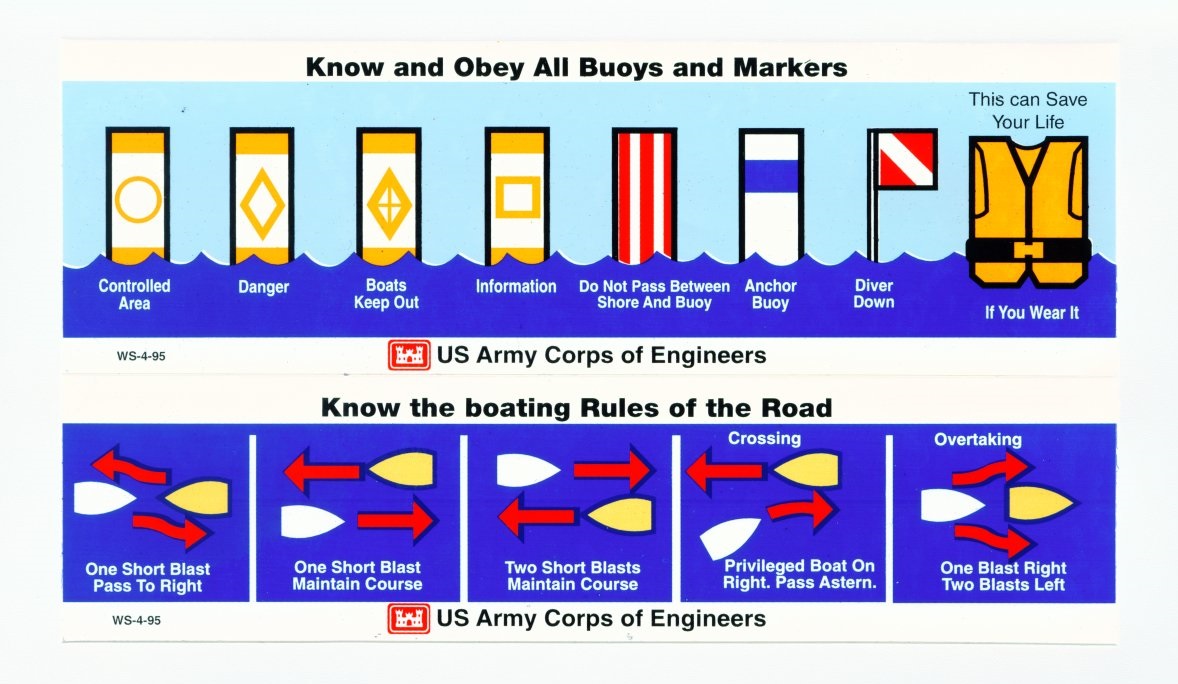Being on a boat feels like stepping into a different world, where even the language transforms—left becomes port, and right turns into starboard. There’s a lot to take in as a boater, from mastering the lingo to understanding the symbols that guide you on the water. Most navigation buoys don’t have words; instead, they use colors and shapes, making it essential to familiarize yourself with them. Here are some common navigation buoys and what they signify.

(US army corps of engineers)
Diamond Shape: This shape warns boaters of potential hazards ahead. Some may include text indicating specific dangers, such as rocks.
Circle: A circle marks areas with restricted operations, such as reduced speed zones or no-wake zones.
Diamond with a Cross: Exercise caution with this symbol—it designates areas where boating is prohibited. This could be a swimming zone or an area off-limits to boats.
Square: Squares provide useful information, such as the location of docks, gas stations, boat ramps, directions, distances, and other essential services.
Mooring Buoys: Although mooring buoys are not navigation aids, they are still essential to recognize. Typically cylindrical or spherical in shape and marked with a white body and a blue horizontal band, these buoys are used for mooring. However, since they are often privately owned, you’ll need permission to use them.
Large Yellow Buoys: These special aids mark areas with unique features or restrictions, such as fishnet zones, cables, pipelines, jetties, military areas, and anchorage. They come in various shapes and may have black letters on them.
Green Buoys: Commonly seen, green buoys indicate the left side of the channel when returning from the open sea.
Red Buoys: Like green buoys (you will see them together), red buoys mark the right side of the channel when returning from the open sea. Remember the phrase “red, right, return.”
Red and White Vertical Stripes: A buoy with red and white vertical stripes signals danger. It means you should avoid passing between the shore and the buoy, as this area is often shallow or used by swimmers.
